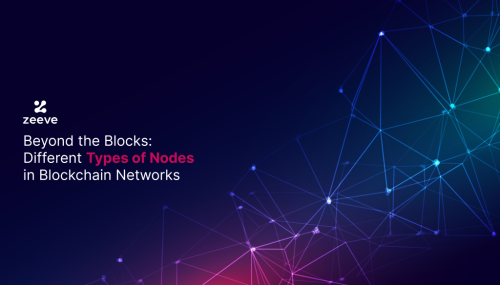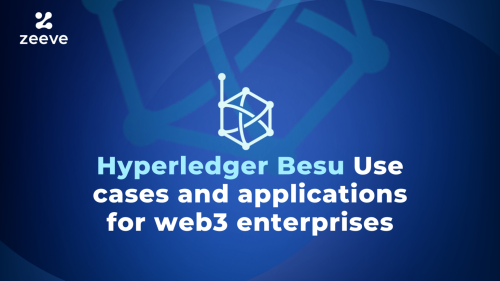The Essential Diversity of Blockchain Nodes (IEEE December Newsletter)

Originally posted on the IEEE Blockchain Newsletter, December 2018 by GBA member, Thomas Burke
Introduction
The rampant evolution of blockchain technology has enraptured the world, and in many ways has caught everyone unprepared for what the future holds. The originating, unhindered cryptocurrency platform, with all its controversial and somewhat enigmatic trappings, often confounds those seeking to implement blockchain within corporate and government organizations – even at the most basic of levels.
Likely nowhere is the confusion more pronounced than with the fundamental construct of the blockchain’s distributed peer-to-peer network of participating nodes. Well-worn permissionless cryptocurrency adages such as: “all nodes are created equal,” “everyone can see all data at all times,” and “no one controls a blockchain” must be cast aside by those striving to deploy a secure, permissioned network within these private and public sectors. This perplexity is deeply rooted within the current precarious state of the blockchain industry as depicted by Gartner, “There is no industry consensus on technology definition, feature set, or target solution requirements.” [1]
Therefore, a diverse set of server nodes – complete with their unique roles and responsibilities – is crucial to the success of a well-formed blockchain network. This variety is essential in promoting efficiencies, while including checks and balances, among the network participants.
Founder’s a Keeper
Certainly, blockchain requires governance and controlling mechanisms to be instituted. According to “The Founder’s Handbook” by IBM, a Founder node is best positioned to lead within the consortium of blockchain partnering nodes. Simply defined, a founder is the “organization and its people driving the creation and ongoing maintenance of a blockchain network.” [2]
Prudent system architecture practices dictate that planners have a well-balanced Information Technology governance model to include security, identity, trust, and performance provisions – all of most importance for a blockchain deployment. The founder best guides this blockchain initiative by setting the pace in deploying the technology for this permissioned environment where participation is approved, and operational privileges are assigned. In so doing, each node will have a stake in the game, as supported by its own network administrator.
A blockchain network must be “logically centralized” – representing both a unified and effectual ecosystem that is agreed-upon by all. As part of this blockchain consortium, all partners must recognize that it is not cost-efficient for each node to perform administrative as well as functional operations. The breadth of responsibilities must be distributed for such fundamental reasons as: separating of duties, minimizing duplications of effort, and promoting economies of scale.
Taken into Custody
As Blockchain standards begin to formulate worldwide, some network designers are promoting a “master” or “controller” node (within the founding organization or otherwise) that is designated to perform duties on behalf of all. Alternatively, the term “Custodian” may be more amenable – complete with its undertones of care and trust. The custodian, with support from others, must be cognizant of industry regulations, business rules, and network operations. To benefit all blockchain node network administrators, the coordinating custodian is responsible for such governance-spawned functions as:
- Assigning and retaining roles/permissions that are used to authorize node activity to trusted and capable participants
- Securing public and private keys for authentication and authorization purposes
- Encrypting data via instituted cryptography practices
- Storing rules that represent smart contracts, and for the invoking of these
- Formulating and instituting consensus validation algorithm(s)
- Maintaining a node’s processing history, and its degree of success
- Recording of service level agreements (e.g., performance, uptime), as approved by the node network administrators
- Managing and monitoring of network performance by:
- Balancing the load among the nodes
- Detecting rogue threats and malicious activity
- Monitoring the machine state of the network (e.g., nodes are operational and in-synch)
- Evaluating a node’s processing performance against any service level agreement measurements
Node Roles
Clearly not all nodes are created equal. Within this permissioned environment, each of the servers can be distinguished by its:
- Vested interest (e.g., consensus work)
- Degree of involvement relating to the types and volumes of interactions within the network
- Network capabilities pertaining to processing, storage, and interconnectivity
- Reputation involving a node’s veracity or performance
As a result, the types of nodes and their privileges will necessarily vary by each blockchain network’s purpose and scope. [3] Using the healthcare industry as an example, the administration and management of electronic medical records, as performed by various types of stakeholders, is an ideal blockchain application. Typical node participants include medical providers, claims processors, billing departments, patients, and regulators. Each of these contributing nodes has a vested interest to ensure that data is secure, trusted, and efficiently processed – within an overall, complete medical history.
The following strawman listing of participant roles shows the typical functions that any node may perform within the permissioned consortium. The following healthcare-related examples best illustrate the importance of these nodes’ participations within this compelling use case.
- Transactor: Generates transactions to write to the blockchain’s ledger. Medical providers, insurance claims processors, and billing department staff all generate various types of operational transactions.
- Endorser: Performs reconciling and proofing functions that may serve to authenticate the source (e.g., proof of ownership), or confirm transactions are received in a proper sequence (proof of order). Through this work, a block of transactions is cryptographically sealed and transmitted. Note: More complex and time-consuming “mining” consensus algorithms such as proof or work are not essential for permissioned networks. This endorsement work is efficiently performed by one or more of the above designated nodes who are empowered with this authority by the Custodian. With each endorsement, the node’s reputation is bolstered.
- Validator: As part of a consensus activity, votes to validate the endorser’s block forming work – thereby confirming finality of the block’s inclusion on the ledger. As an example, an insurer can be assigned to vote whether or not a medical procedure is legitimate.
- Maintainer:
- Partial: Retains a headers-only version of each validated block within its own network.
- Full: Stores a complete copy of the ledger, as part of the blockchain database backbone, or in an off-chain repository.
Healthcare participants may opt to maintain partial or full block records. For instance, a billing department certainly does not need a complete record of doctor notes; whereas an insurance claims unit would require complete details inclusive of historical transactions.
- Viewer: Reviews, via query or receipt, data transactions based on access granted. A patient is a prime example of someone who is granted viewing rights.
- Enforcer: Within the ledger, inspects full records for auditing or regulation-monitoring purposes via querying or reviewing of generated reports. As an example, a federal government auditor would participate to ensure that the patient’s privacy of medical treatments is protected.
Conclusions and Future Directions
As this technology progresses, blockchain governance will take hold and keep pace by guiding such practices as data management, network interfaces, security provisions, and ecosystem design. As node participants become more knowledgeable and experienced with permissioned blockchain platforms, the above node functions will be streamlined through increased automation – all the while balancing governance standards against decentralization features.
References
[1] F. Chesni, D. Furlonger, R. Kandaswamy, A. Leow, “Market Guide for Blockchain Platforms,” Gartner, March 2018, p. 1. https://www.gartner.com/doc/3869090/market-guide-blockchain-platforms
[2] M. Hamilton, K. Harrison, E. Lowry, and J. Widdifield, “The Founder’s Handbook – Edition 2.0,” IBM, 2018, p.4. https://www-01.ibm.com/common/ssi/cgi-bin/ssialias?htmlfid=28014128USEN
[3] American Council for Technology-Industry Advisory Council Blockchain Working Group, “Blockchain Playbook for U.S. Federal Government,” April 2018, p. 60. https://www.actiac.org/act-iac-white-paper-blockchain-playbook-us-federal-government






Responses